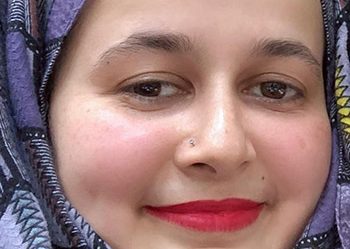
It began one ordinary afternoon after school. My daughter came home, bubbling with excitement, and said, “Papa, I want to teach you Arabic!” I thought it was just a game, but before I could respond, she had already opened her Arabic notebook and begun writing letters neatly on the whiteboard — Alif, Ba, Ta. She sat explaining every letter with the seriousness of a real teacher and not to forget dressing up like her Arabic teacher !
At first, I joined in just to make her happy. But soon, her lessons became a ritual at home. She started with greetings — Marhaban (hello), Sabah al-khair (good morning), Shukran (thank you), and Ma’a salama (goodbye). She would say each word slowly, wait for me to repeat, and then giggle when I got the pronunciation wrong.
A few days later, her lessons expanded to animal names. She drew pictures and proudly taught me that Arnab means rabbit, Asad means lion, and Hisaan means horse. I was amazed by how confidently she explained each one. I started to realize that this wasn’t just about Arabic anymore; it was about her joy in sharing knowledge and my joy in watching her grow.
Every time I learned a new word, she’d clap and say, “See, Papa! You’re learning so fast!” Her confidence and pride reminded me how important it is for children to feel heard, respected, and empowered — especially when they get to teach us something new.
Through this experience, I learned more than just a few Arabic words. I learned the beauty of patience, the humility of being a learner again, and the joy of seeing my child take the lead.
Takeaway:
Children often become our greatest teachers. When we allow them to share what they know — even a few words, songs, or stories — we give them confidence and remind ourselves that learning never stops. Sometimes, the most beautiful lessons aren’t in classrooms or books, but right in our living room, from the little teachers we call our children.
Mr. Gaurav Arora
Parent of Aizel Arora Grade 2B



